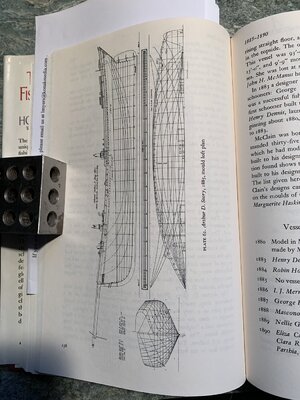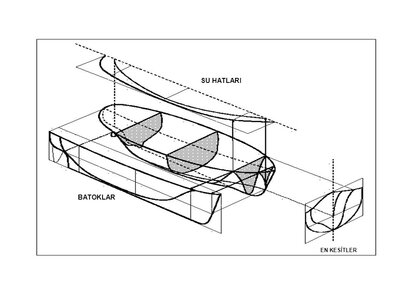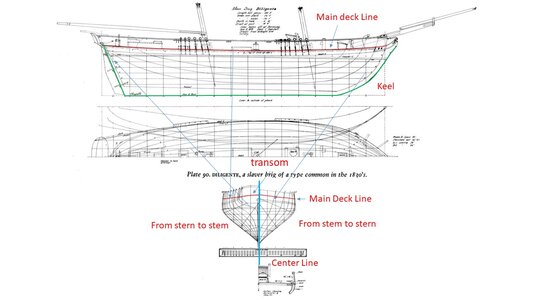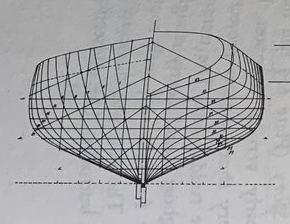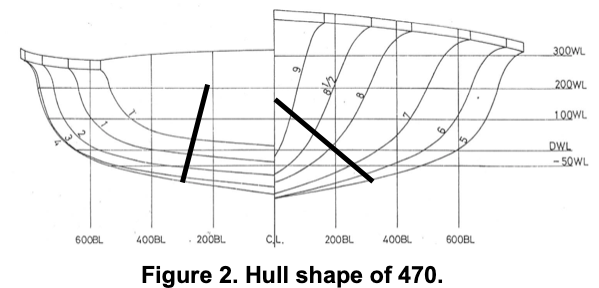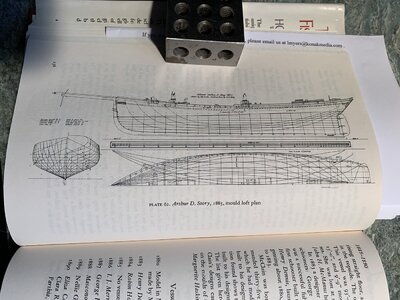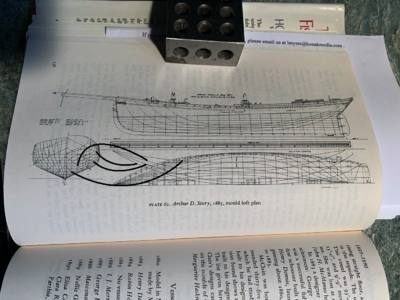The attached photo is one example of a large number of schooners lines presented in The American Fishing Schooners by Howard Chapelle. These were taken off by him from old half hull models used for lofting and construction. I am puzzled by the lines curving back up toward the bar in the center as they are somehow related to the lines of the hull at the bottom of the set. WIthout stating my own assumption I would appreciate your explanation of those to me and how they differ from the hull lines below. Rich (PT-2)